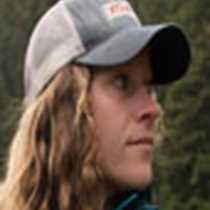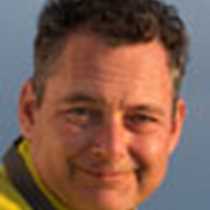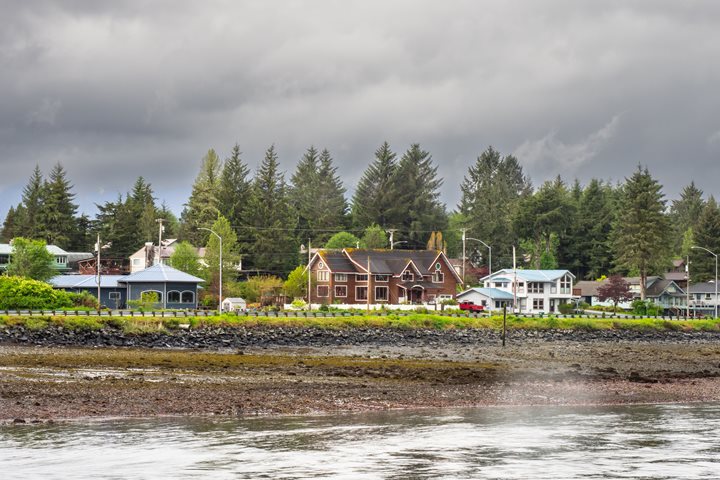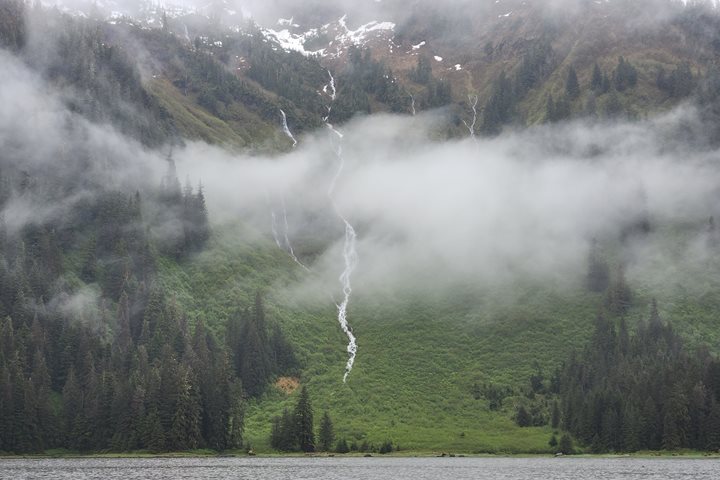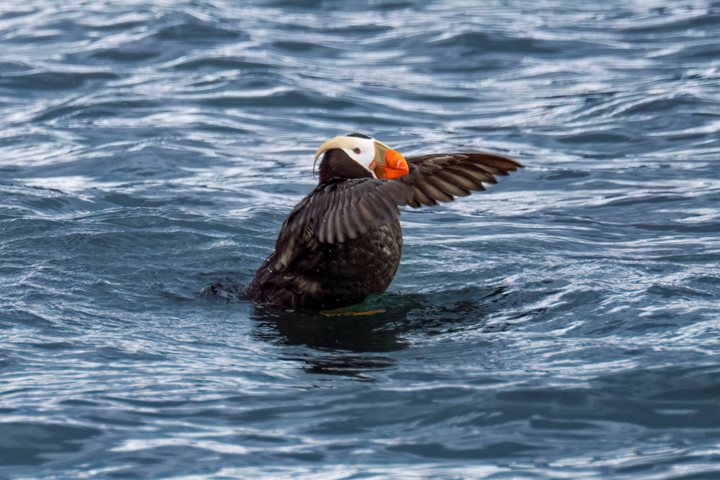Glacier Bay National Park is a UNESCO World Heritage site and gorgeous example of Southeast Alaska. Covering 5,130 square miles this wonderful example of pristine wilderness is protected as are the animals who call it home.
During the day National Geographic Sea Bird cruised through the park. The guests marveled at the sights—a view of the Fairweather mountain range, snow peaked mountains that rise straight out of the saltwater. Down many of these twisting steep channels one will find phenomenally massive, ancient glaciers. Some of these are receding rather rapidly, the Marguerite glacier calves off six feet per day from her facing edge, for example. The show these glaciers give off is exhilarating, the thunderous noise the glacier makes when she drops a 200-foot-tall chunk of ice is one no guest will ever forget.
Glacier Bay is also home to many different creatures. Today the guests were lucky enough to see brown bears, humpback whales, and horned puffins. Brown bears have a variety of viable clutch size. This particular female happened to have three cubs with her, but up to six have been recorded to only one mother. Bears are the only mammals that give birth to their young while in hibernation. Their offspring, when born, are remarkably small when compared to their adult size. These huge bears begin at only a few ounces strong, relying on a few months of milk-fat-rich nursing in hibernation to build up their strength until they venture out of the den and into the real world.
After a day of cruising, our guests chose to disembark and take a walk around at Bartlett Cove, a beautiful area to stretch legs and learn about forest ecology. Everyone broke up into different groups, from photo walkers to long walkers, and even a few guests decided to join the wellness specialist and undersea specialist on a short run. After a wonderful day in Glacier Bay the guests wandered off to bed happy and full of wilderness adventure.



